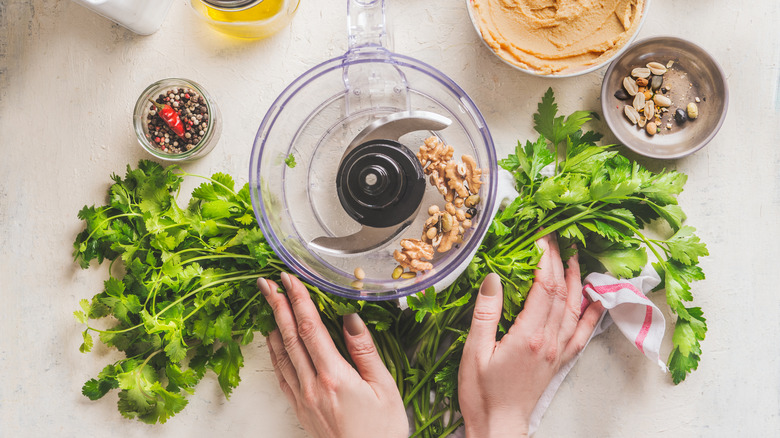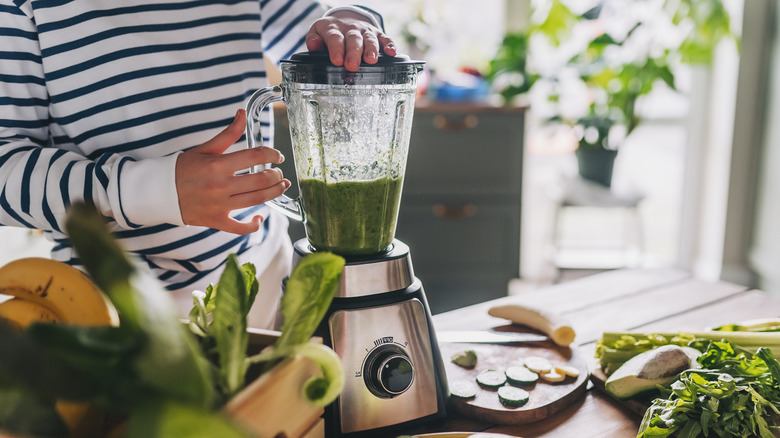The Right Time To Use A Food Processor Vs Blender
We nudge, we push, we rearrange. No matter how large or small our kitchens are, we're always looking for ways to make more space for our small appliances, winnowing out those that aren't really necessary. So you may be asking yourself whether you really need both a blender and a food processor. After all, if you're making something like a puree, salsa, hummus, baby food, or pesto, either appliance would work. Unfortunately, most home cooks will need to make room for both. They may overlap on some tasks, but if you're making something liquid, a blender is best. For chopping, shredding, and slicing, you'll want that food processor.
The reason each appliance is best for different functions is due to their designs and more specifically to three key features: the speed of the motor; the sharpness, location, and angle of the blades; and the shape and size of the container. Although a small food processor can become one of your favorite miniature kitchen tools, there's a reason why you want to use a blender to boost your frozen margaritas and a food processor to make dips and pesto.
Blenders have a need for speed
Blenders usually have one fixed blade at the bottom of the jar. Looking a bit like a metal origami at the bottom of a well, the blade is shaped into various angles with sharp points, which helps thoroughly combine the ingredients in the barrel. That barrel's tall and narrow design creates a vortex that helps draw the ingredients down toward the blades. Blenders have more powerful motors so the blades to rotate more quickly, breaking down tough ingredients and creating a smooth product. The faster speed, especially with a high-powered blender like the Vitamix E-310, can make it more difficult to control how quickly the food is being broken down. A blender can even clean itself: Fill the jar halfway with water and soap and turn it on.
Food processors have an S-shaped blade that chops, purees, and dices. But many, like the Breville Sous Chef 16 Pro, come with additional blades that slice, shred, and knead dough. A processor's slow speed provides more control over the appliance's function and the fineness of the chop. The stop-and-go action of the pulse button also allows heavier foods to fall to the bottom to be chopped and mixed in with the other ingredients. The shallower, wider container makes it easier to scrape out food from its sides. Unlike a blender, however, the container is not meant to hold liquids and can leak or overflow.
If you're really at a loss, a combo tool, like the Cuisinart Smart Power Duet, might be a good thing to throw into the mix.

